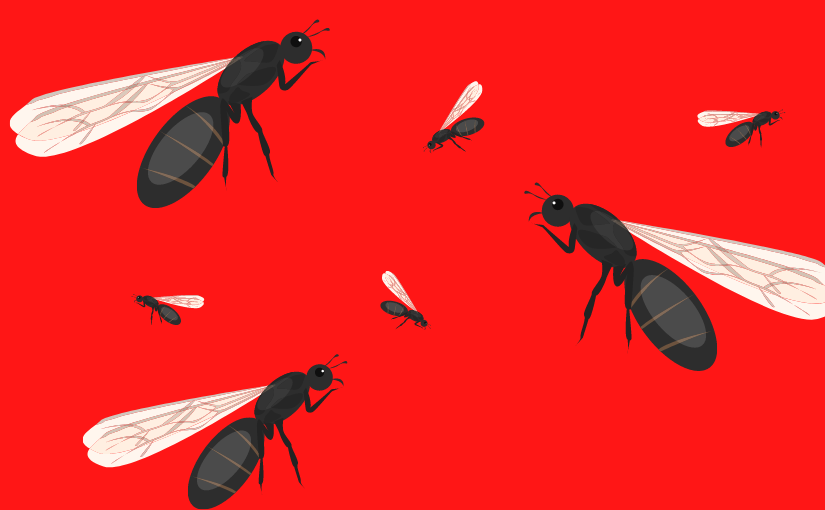The appearance of winged carpenter ants in your home can be very alarming. Like other carpenter ants, they are large compared to other ant species, and winged carpenter ants can be even larger than workers. A few winged carpenter ants in your home may not be cause for concern; they may be merely lost and will move on soon. However, if there are many winged carpenter ants in your home, you may have a problem. Chances are good that you have an existing colony that produced the winged ants, also called swarmers, and now you need carpenter ant removal in Toronto to get rid of it before the ants can cause any more damage.
What Are Winged Carpenter Ants?
Despite how it may seem at first, winged carpenter ants are not a separate species. Ordinarily, in an ant colony, there is one queen ant that mates with the male drones and produces all the ants in a colony. When the colony is mature and conditions are right, a generation of swarmers is produced. Swarmers consist of both male and female ants and, apart from their wings, the thing that sets them apart is that they are sexually developed.
The wings allow the swarmers to fly away from the colony. Their purpose in life is to reproduce and form new colonies. All the swarmers of the same species are produced at the same time within a given area. This makes it more likely that winged carpenter ants will meet and mate with swarmers from another colony, which results in more genetic variety and hardier offspring.
Once the male swarmers have mated, their purpose has been served and they die soon after. A female swarmer pulls her wings off after mating and looks for a place to found a new colony by building a nest and laying eggs. At first, the new queen is responsible for starting the nest by herself, but once the first generation of workers matures, she has help with nest construction and can devote her time entirely to reproduction.
What Attracts Winged Carpenter Ants?
Carpenter ants make their nests in wood by hollowing out tunnels with their strong front jaws. Moist wood is easier to chew through, so winged carpenter ants tend to be attracted to water. On the exterior of a building, they may be attracted to damp wood around doors and windows. If roof shingles are leaking, the ants may be drawn to the area underneath. Inside the house, carpenter ants may be drawn to areas under sinks, around showers and bathtubs, drains, or anywhere that there is a water leak.
Carpenter ants can also be drawn to false beams and hollow-core doors. These areas are dry, but the ants may find them easier to chew through because of the way they are built.
How Can You Identify Winged Carpenter Ants?
All species of ants produce swarmers, so you need to know if you are dealing with winged carpenter ants or another species, which is unlikely to cause much harm. You should also be able to tell winged carpenter ants apart from termite swarmers. Both can cause damage to wood, but termites consume it while carpenter ants excavate it.
You should be able to tell winged carpenter ants apart from swarmers of other ant species by their size. Ant swarmers have several characteristics that distinguish them from termite swarmers:
- Antennae with a single joint in each
- Slender waist
- Unevenly sized wings, with the second pair being smaller than the first
Why Should You Call Truly Nolen for Carpenter Ant Removal in Toronto?
Our pest control services involve first identifying the pest to make sure that the problem is with carpenter ants rather than a different, more benign species. Once we have made a thorough inspection to positively identify the pest, we develop a treatment plan. Find out more about our carpenter ant control methods.
